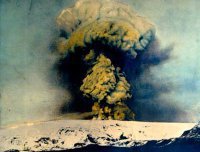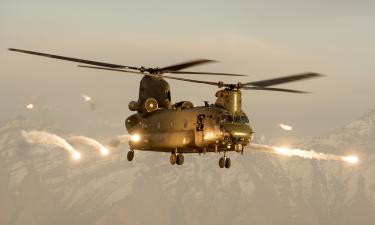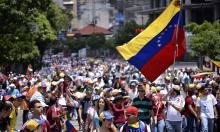Volcanoes: Disturbing forecast for 2012
 It appears that the "smoke and ash party" of Icelandic volcanoes may continue across the Atlantic. Scientists say that Katla, another volcano in Iceland, may erupt in the near future. In addition, volcanologists are concerned about the ongoing eruption of the underwater volcano near the Canary Islands.
It appears that the "smoke and ash party" of Icelandic volcanoes may continue across the Atlantic. Scientists say that Katla, another volcano in Iceland, may erupt in the near future. In addition, volcanologists are concerned about the ongoing eruption of the underwater volcano near the Canary Islands.
Katla's eruption can be much stronger. The volcano may lead to much greater catastrophic consequences for the country than the debuts of Eyjafjallajokull and Grimsvotn.
Katla is situated in the south of Iceland. It is a large volcano, with an approximate height of 1,512 meters and the diameter of the caldera (the crater) of 10 kilometers. There is a glacier on the slope of the volcano - Myrdalsjokull. If Katla erupts, the glacier will melt and trigger a catastrophic flood on the entire south-eastern coast of the island.
The volcano started to show the signs of life in the middle of the year. Scientists registered its activity on July 9. It was a relatively insignificant quake, although it caused floods and destroyed several bridges. As a result, several regions of the country found themselves in isolation for days.
In November 2011, scientists registered over 500 quakes in the area of Katla's caldera. All the quakes were weak, but they mean that the magma in the cavity underneath Katla has started moving.
Katla enjoys a very ill reputation in Iceland. The eruptions of this volcano were noticed back in the 8th century. The volcano erupts every 40-80 years. Katla woke up in 1918, 1934 and 1955. The eruption of 1918 became the volcano's strongest during the 20th century.
However, the most powerful eruption of this volcano took place in 1755. The melting of the glacier in the area of the volcanic activity created the flow of water measured at 200,000-400,000 m3 a second. For comparison, the average duty of water in the entry of one of the world's largest river, Amazon, makes up 220,000 m3 a second. The eyewitnesses left memories of that disaster: the powerful river was rushing down the slopes of Katla, breaking off huge icebergs the size of mountains and taking them into the ocean.
Katla's eruption in 1783 was even more catastrophic. The volcano was raging for eight months. Legends say that the eruption ended with something like a nuclear winter, which continued for a whole year.
Katla is connected with other volcanoes of the island. Volcanologists determined that Katla's activity in 920, 1612 and 1821-1823 was preceded with the eruption of the well-known Eyjafjallajokull. This volcano sits only 20 kilometers from Katla. It may mean that the eruption of the volcano with the unpronounceable name may herald the eruption of Katla. Nevertheless, Katal has not been showing any signs of imminent eruption lately.
In the meantime, the underwater volcano situated to the south off El Hierro island (the Canary Islands) has been bothering the local residents with its activity since September 2011. The volcano has entered the third phase of its eruption. Scientists registered a giant whirlpool above the crater of the underwater volcano. The diameter of the whirlpool was 50 meters, and the water inside was warmer than on the outside.
Many people living in the southern part of the island have to leave their homes because of the unbearable smell of sulphur. The content of CO2 in the air has tripled, which means that the volcano is not going to calm down. The center of the eruption has been getting closer to the surface, which means that a new island will soon appear near El Hierro. Will the volcano continue its eruption when it comes out of the water?
It is worthy of note that there is a geological connection between Katla and the volcano near El Hierro. They both belong to the system of the Mid-Atlantic Ridge. The whole of Iceland is a part of this ridge too - it just rose above the water surface. Therefore, the whole Atlantic may wake up after the "ring of fire" in the Pacific.
Anton Yevseev
Pravda.Ru
Subscribe to Pravda.Ru Telegram channel, Facebook, RSS!



